Cast vs. Etched Plaques: Durability, Design, and Eco-Friendly Materials Compared
Choosing the right type of plaque for your signage project is crucial. Our blog, simplifies this decision by providing a detailed comparison. Whether you're working on a corporate building, a public monument, or an artistic piece, this article gives you the key insights into the durability, design versatility, and eco-friendliness of both cast and etched plaques. Make an informed choice that aligns with both aesthetic appeal and environmental considerations.
Check out this exquisite cast bronze plaque we crafted for Bellaire Little League in Houston! This piece is a true testament to community spirit, featuring only the names of generous donors, each engraved with the utmost care and precision. No images, just a meaningful array of names, symbolizing unity and support. It's more than just a plaque, it's a lasting expression of gratitude that will endure for years to come.
Cast Plaques
- Definition and Construction: Cast plaques are produced by pouring molten metal, typically bronze, brass, or aluminum, into a mold. This process creates a durable, three-dimensional design. Notably, bronze plaques exhibit only minimal surface wear after a decade of exposure, underlining their resilience.
- Ideal Usage: Primarily employed outdoors, cast plaques have been proven to retain legibility and structural integrity for over 50 years in urban environments. They are particularly favored in settings where historical significance or a sense of permanence is desired.
- Durability Factors: In terms of longevity, aluminum plaques are known to withstand coastal environments for decades, resisting salt-air corrosion effectively. Bronze plaques, on the other hand, have been observed to last for more than half a century, even in urban areas with significant pollution and weather variation.
- Design Flexibility: Cast plaques can accommodate text as small as 1/4 inch, maintaining clarity. However, their real strength lies in larger, more pronounced designs, where the depth and texture add to the visual impact.
- Eco-Friendly Aspect: The recycled content in bronze used for casting is often as high as 90%, making it a sustainable choice. This recycling process significantly reduces the carbon footprint compared to using virgin materials.
Take a look at this striking etched stainless steel plaque for 'Puffer'! The logo and name stand out in vivid painted in-fills, contrasting against the sleek, polished steel. It's not just a plaque; it's a showcase of Puffer's commitment to quality and style. A bold, modern statement for any professional environment
Etched Plaques
- Definition and Manufacturing : Etched plaques involve a precise chemical process to etch designs onto metal surfaces. They are capable of capturing extremely fine details, with line resolutions as minute as 0.003 inches.
- Ideal Usage : Suited for indoor or sheltered outdoor areas, etched plaques are preferred for detailed graphics and text. Their ability to replicate complex imagery makes them ideal for corporate branding or detailed commemorative displays.
- Durability Factors : Stainless steel, a popular choice for etched plaques, has been shown to last 20-30 years in outdoor settings, with regular maintenance playing a critical role in preserving their appearance and legibility.
- Design Flexibility : Etching offers a high degree of design flexibility, allowing for the replication of intricate patterns, detailed logos, and even photographic imagery with exceptional clarity and precision.
- Eco-Friendly Aspect : Approximately 60% of the stainless steel used in these plaques is recycled material. Furthermore, advancements in etching technology have led to more environmentally friendly processes, reducing harmful chemical usage and waste.
Differences Between Cast and Etched Plaques
Cast Plaques are more suited for enduring harsh outdoor conditions with minimal maintenance. Their robust construction and materials make them ideal for long-term display in environments with significant weather variations. Etched Plaques offer greater detail and are best for controlled environments. They require more maintenance when used outdoors, particularly in areas with high humidity or pollution.
Similarities Between Cast and Etched Plaques
- Material Benefits : Both types of plaques use metals like bronze and stainless steel, renowned for their durability. These materials can last for decades, with their longevity further enhanced through regular maintenance and care.
- Eco-Friendly Materials : The emphasis on recycled materials is a common thread. In cast plaques, bronze often contains a high percentage of recycled content, while stainless steel used in etched plaques is similarly sustainable.
- Versatility in Design : Both cast and etched plaques offer a range of customization options. Cast plaques excel with bold, raised designs, while etched plaques are the go-to choice for intricate, detailed imagery and fine text.


